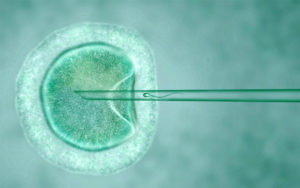What is Cesarian Section?
A Cesarean section Delivery is additionally known as C-Section. It is a surgical procedure in which a baby is delivered through incisions in your abdomen and uterus. C-sections are performed when a vaginal delivery isn’t possible or safe, or when the health of the mother & baby is at the risk.
How common is C-section delivery?
The frequency of the C-section in India was 8.5% in National Family Health Survey -3 while the data in National Family Health Survey -4 indicate that it has significantly raised to 17.2%.
What can I expect before a C-phase? The Procedure
If you have a planned C-section, you’ll be gone through the following procedures:
- You need to sign a consent form for the surgical treatment.
- The anesthesiologist discusses alternatives for anesthesia. Generally, it is an epidural (or spinal block) that numbs you from your breasts right all the way down to your feet.
- The hair in the place across the incision could be shaved.
- A catheter is inserted to hold your bladder empty.
- Heart and blood pressure monitors apply to hold your vitals on a track.
- You get an IV in your hand or arm to provide you medicine & fluid.
- You will discuss the procedure & what to expect along with your obstetrician (if you have not already).
- If an emergency C-section is needed, your obstetrician delivers your baby quickly because either the health of the mother or the baby is at risk. Although, there is typically not much time to prepare & you could need general anesthesia as it works faster.
Is C-section delivery safe?
Usually, vaginal births are preferred. But in a few cases, a C-section surgery is the most effective and secure choice. For example, a C-section delivery is a safer option while your baby is breech or you have placenta previa (the placenta covers a part of the cervix). A C-section delivery contains risks and advantages, which need to be discussed with your pregnancy care provider.
What occurs after a C-section delivery?
Like vaginal births, your obstetrician will deliver the placenta after your infant is born. Then, your health care provider will sew your uterus & sew or staple your belly muscles. The stitches need to dissolve; however, staples are eliminated from the hospital one week later.
Your abdomen might be paining for numerous days or weeks. In a few cases, your healthcare provider may also prescribe more stronger painkillers. You can count on restrictions on your physical activities, take it easy & depend upon family & friends when you step out of your home. A common C-section requires at least 2-3 days in the hospital.
What are the advantages of a C-section delivery?
The benefits of a cesarean section delivery rely upon your being pregnant. In maximum cases, the most important gain of a C-section delivery is that it is more secure for both mother and baby.
When a vaginal birth is unstable or may harm your infant, most healthcare providers will turn to a C-section delivery to limit dangers.
Sometimes C-section deliveries are unplanned. For example, if the infant’s heart rate drops to a dangerous level, an emergency C-section delivery is more secure than letting your infant’s heart rate decline further.
Myths About C-Section
Myth 1: C-section delivery is less complicated than vaginal birth.
Truth: C-section is actually a prime abdominal surgical treatment that calls for a longer recovery time. Any time a patient has surgical treatment, irrespective of how their routine is, there are risks involved.
Myth 2: C-sections will reduce the danger of prolapsing.
Truth: Vaginal prolapse is a condition where the partitions of the vagina become lax. The surrounding uterus, rectum, bladder, urethra, and small bowel start to fall out in their ordinary positions due to the fact the vaginal wall cannot assist them. However, this condition is a risk irrespective of vaginal or cesarean birth.
Myth 3: A mother can not have a vaginal birth after a cesarean (VBAC).
Truth: This is the most common myth. A VBAC isn’t always right for everyone, however, most women are reasonable candidates. Women have to communicate with their health practitioner to peer in the event that they meet certain criteria to be a great candidate for a vaginal birth after an earlier cesarean.
Also, you need to pick out a maternal hospital that permits and is familiar with performing VBACs, as not all hospitals do. Furthermore, a VBAC needs to be tried in a hospital, as there are dangers. It is most secure to deliver this way in which an OBGYN, anesthesia physicians, and a surgery room are usually immediately available.
Duration of Cesarean Section Recovery
- Recovery duration differs from patient to patient. But it usually takes longer to get over a cesarean delivery than from vaginal birth.
- Usually, you’ll stay in the hospital for additional days after cesarean delivery, so your medical practitioner can ensure you’re healthy & recovering well. However, it could be difficult with a newborn.
- Try to rest as much as you can. You ought to keep away from lifting something heavier than your infant.
- Follow up with your physician to remove the stitches in your belly (the uterine stitches will dissolve).
- Regularly clean the scars to keep them away from infection.
- Always put on free clothes that do not rub or worsen the scar.
- Driving & exercising may also be off-limits till your physician gives you the all-clear.
Usually, it takes around 2-4 weeks post-birth. Recovery from a simple cesarean can take 4-6 weeks.
Conclusion
Each pregnancy is different, so consultation with a doctor is very important.
In west Uttar Pradesh, you can contact the Gynaecologist of Ravi Hospital Group in Noida, Agra, Firozabad and Aligarh for more details.
Disclaimer
This article should not be considered a substitute for medical advice. Please consult your treating Physician or Gynaecologist for more details.




